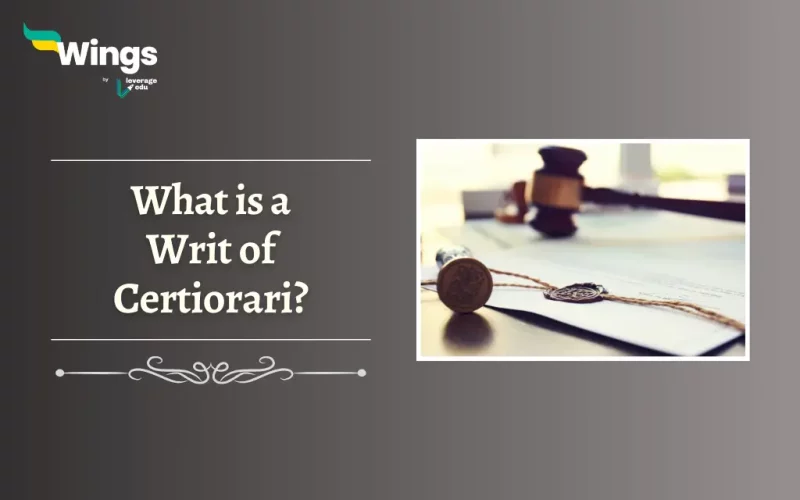A Writ of Certiorari is a legal method through which a higher Court reviews a decision made by a lower court, tribunal, or administrative body. The Latin term “Certiorari” translates as “to be informed” or “to be made certain.” Furthermore, this Writ is mostly in use during appellate proceedings. Moreover, a person seeks the review of a decision that they believe is an error. Additionally, it allows the higher Court to evaluate whether the lower court followed the correct procedures, applied the law correctly, or exceeded its jurisdiction. Read on to learn more about the Purpose, its legality in India and a Certiorari Writ example!
What is the Purpose of Certiorari?
Table of Contents [show]
The purpose of Certiorari is to guarantee uniformity and consistency in the application and interpretation of the law in Courts and tribunals.
- In addition, it acts as a check on lower courts, hence preventing them from exceeding their jurisdiction or committing errors of law.
- A Writ of Certiorari acts as a corrective mechanism, thus guaranteeing that legal proceedings are fair and just.
- Moreover, it is an extraordinary remedy, used sparingly and in specific circumstances where a significant error needs correction.
Also Read: The Basic Structure Doctrine: Safeguarding Constitutional Integrity
What is Certiorari in the Indian Constitution?
Certiorari in the Indian Constitution makes sure that justice is done, errors are corrected, and the Rule of Law is upheld.
- Under Article 32, the Supreme Court of India has the power to issue Writs, including the Writ of Certiorari, to enforce Fundamental Rights.
- Likewise, Article 226 grants the High Courts in India the power to issue Writs for the enforcement of rights as well as for any other purpose.
Also Read: Important Articles in Indian Constitution
Certiorari Writ Example
In the case of Syed Yakoob v. Radhakrishnan of 1964, the Supreme Court of India utilised the Writ of Certiorari to review a decision made by the Kerala High Court.
- The petitioner, Syed Yakoob, sought relief against an order passed by the High Court that dismissed his appeal in a civil suit.
- In addition, the Supreme Court of India, exercising its powers under Article 32, issued the Writ of Certiorari and found that the High Court had acted without jurisdiction.
- Therefore, the Supreme Court quashed the High Court’s decision.
- Thus, showing the importance of the Writ of Certiorari in correcting legal errors and upholding the Rule of Law.
Related Blogs
Lastly, we hope you liked our blog and gained an understanding of What is a Writ of Certiorari. Moreover, you may even read more blogs and empower yourself with knowledge regarding Civics and Polity!
 One app for all your study abroad needs
One app for all your study abroad needs















 45,000+ students trusted us with their dreams. Take the first step today!
45,000+ students trusted us with their dreams. Take the first step today!
